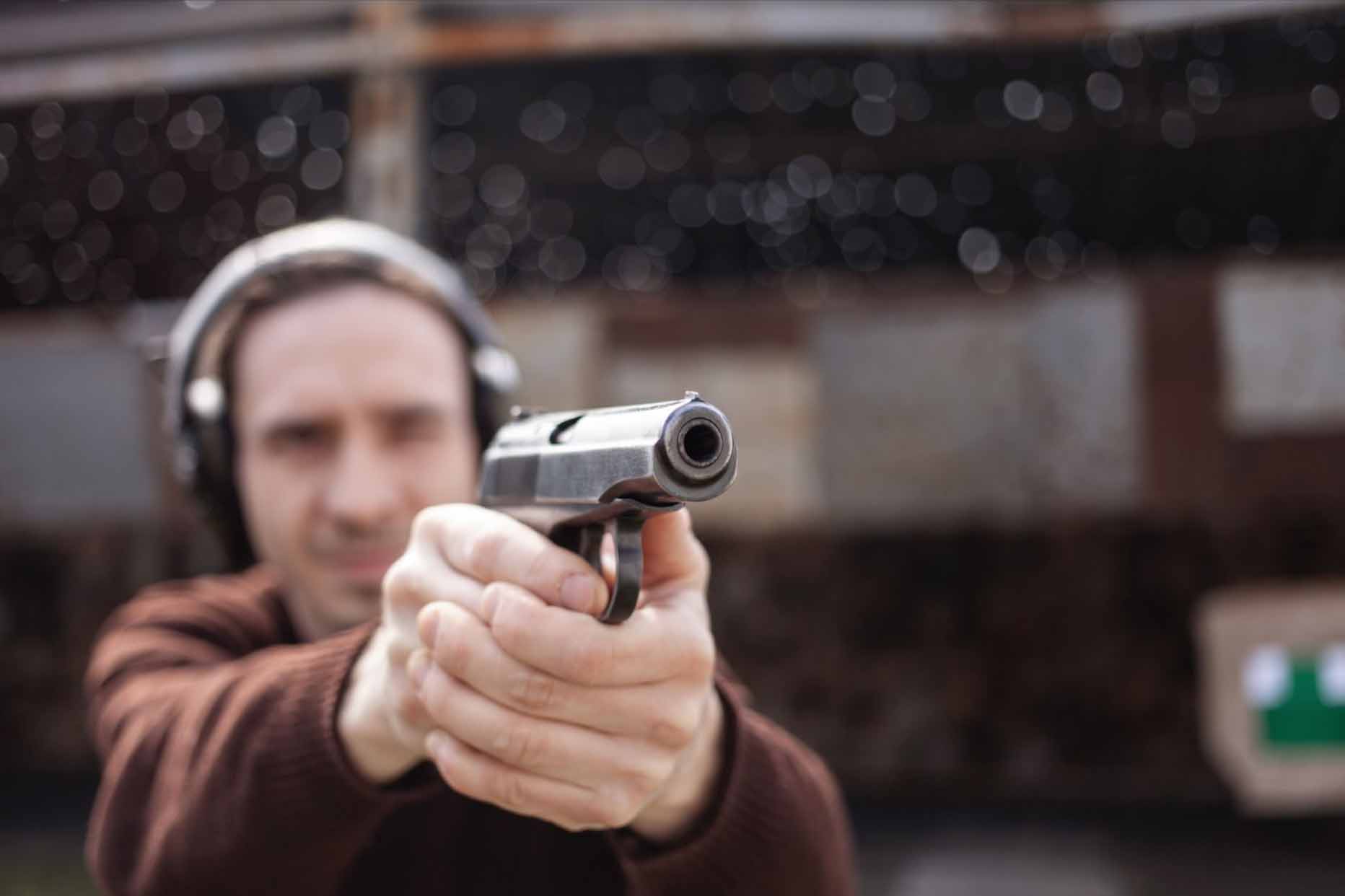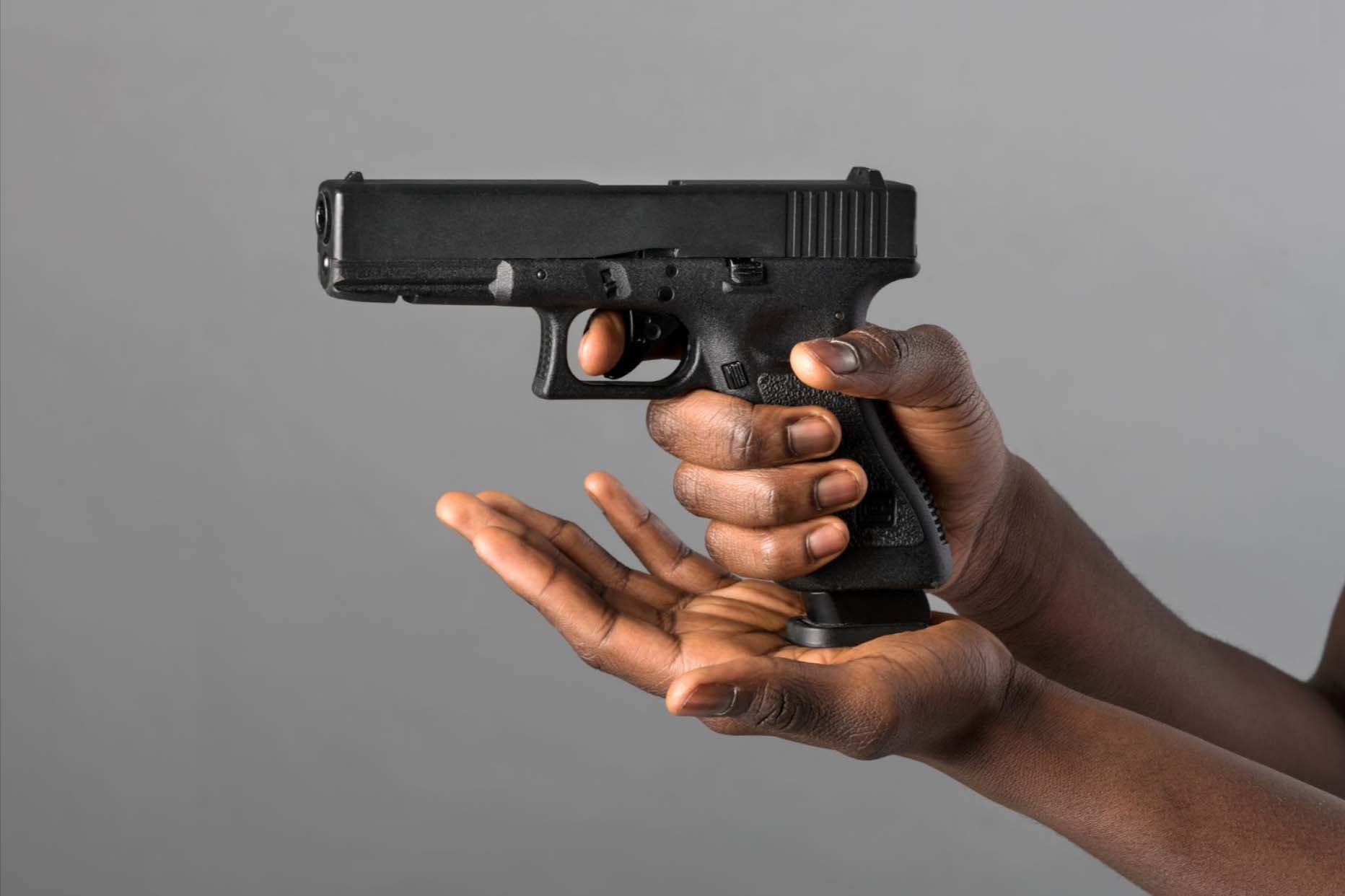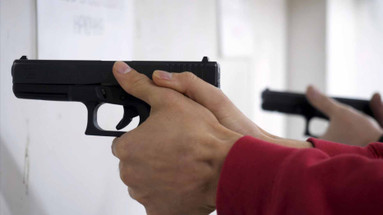Jun 25th 2024
How to Use a Gun Accurately
How to Use a Gun Accurately
Learning how to use a gun accurately is a skill that combines precision, discipline, and practice. Whether you're a seasoned gun owner or a newcomer stepping into the world of firearms for the first time, mastering the art of accurate shooting is essential. For gun enthusiasts, achieving accuracy is a mark of proficiency and confidence, while for beginners, it is the foundation of safe and effective gun handling. Accurate shooting enhances your performance and ensures safety, whether on the range, hunting, or protecting your home.
How to Shoot a Gun Techniques
Accurate gun usage combines technique, practice, and mental focus. Whether you are a novice or an experienced shooter, implementing these proven techniques can significantly improve your shooting precision. Here, we delve into ten essential methods to help you become a more accurate shooter.
1. Proper Sight Alignment
Proper alignment of the front and rear sights is necessary for accuracy. Ensure the front sight's top is centered in the rear sight aperture and level with the rear sight's top. This alignment ensures that your shots will hit where you aim.
2. Consistent Trigger Control
Trigger control is about pressing the trigger smoothly and steadily. A sudden or uneven pull on the trigger can distort your aim. Squeeze slowly and deliberately to prevent messing up the sight alignment.
3. Steady Breathing
Breathing control plays a vital role in shooting accuracy. Breathe deeply and slowly release the air to minimize movement of the body. Fire occurs when your body is most vulnerable during the natural respiratory pause.
4. Firm Grip
A firm, consistent grip on your firearm helps maintain control and reduce recoil. Ensure your grip is firm but not so tight that it causes hand tremors.
5. Proper Stance
Adopt a stable shooting stance to improve your balance and control. The isosceles and Weaver stances are popular options, each providing a solid foundation for accurate shooting.
6. Follow Through
After firing, focus on the target and continue to hold your shooting stance and grip. This follow-through ensures you don't inadvertently shift your aim before the bullet exits the barrel.
7. Use of a Rest or Support
A shooting rest or support can significantly enhance accuracy, especially for long-range shots. This technique reduces the impact of hand and body movements.
8. Regular Practice
Regular, disciplined practice is key to improving accuracy. Dry firing exercises, range time, and simulated shooting scenarios help develop muscle memory and refine your skills.
9. Mental Focus
Mental discipline is as important as physical technique. Stay calm and focused, concentrating on each shot as if it were the only one that matters.
10. Quality Equipment
Using well-maintained, high-quality firearms and ammunition can enhance your shooting performance. Regular cleaning and proper maintenance ensure your equipment functions reliably and accurately.
Mastering accurate gun usage requires a combination of proper technique, consistent practice, and mental focus. Incorporating these ten proven techniques into your shooting routine can enhance your precision and confidence, ensuring a safer and more enjoyable shooting experience.

Seven Common Mistakes When Using a Gun
Accurate gun handling is about learning the correct techniques and avoiding common mistakes, compromising accuracy and safety. Here are seven mistakes that shooters frequently make and how to avoid them to improve your gun handling skills.
Poor Trigger Discipline
One of the most common mistakes is improper trigger discipline. Avoid placing your finger on the trigger until you are ready to shoot, which prevents accidental discharges and ensures better control over your shots.
Incorrect Sight Picture
Failing to maintain a proper sight picture can lead to missed targets. Always ensure the front sight is in sharp focus and aligned correctly with the rear sight and your target.
Inconsistent Grip
A consistent grip can prevent your shots from scatter. Ensure you have a firm, consistent grip on your firearm, with both hands working together to control the recoil.
Neglecting Follow-Through
Many shooters forget to follow through after pulling the trigger. Maintaining your stance and focus after each shot ensures that you do not disrupt your aim prematurely.
Poor Stance and Balance
A weak or unstable stance can affect your accuracy. Adopt a solid, balanced stance that allows you to absorb recoil and stay on target.
Anticipating Recoil
Flinching or anticipating recoil can throw off your aim. Practice dry firing to get used to the trigger pull and reduce your reaction to the recoil.
Inadequate Practice
Infrequent or unfocused practice can hinder your progress. Regular, structured practice sessions help develop muscle memory and improve shooting skills.
Avoiding these common mistakes is essential for accurate and safe gun handling. Recognizing and correcting these errors can enhance your shooting precision and overall performance, ensuring a safer and more practical experience with your firearm.

How to Use a Gun With Proper Grip and Stance
Proper grip and stance are the foundations of accurate shooting. These elements are crucial for controlling your firearm and ensuring consistent shot placement. Here, we explore the importance of grip and stance and how they contribute to accurate shooting.
Proper Grip
A proper grip ensures you control your firearm, minimizing recoil and allowing for quick follow-up shots. Your grip should be firm and consistent, with both hands working together to stabilize the gun. The dominant hand should wrap around the grip with the index finger resting on the trigger, while the support hand should cover the remaining exposed grip, fingers wrapped around the dominant hand. This grip technique helps distribute the recoil force and keeps the firearm steady.
Correct Stance
Adopting the correct stance is essential for maintaining balance and stability while shooting. Two common stances are the isosceles and Weaver stances.
Isosceles Stance
In this stance, the shooter stands with feet shoulder-width apart, knees slightly bent, and both arms extended straight out, forming an isosceles triangle. This stance provides stability and a straightforward alignment with the target.
Weaver Stance
The Weaver stance involves positioning the feet staggered, with the support foot slightly forward. The shooter bends the elbows, creating a push-pull tension between the hands. This stance allows for better recoil management and mobility.
Proper grip and stance are crucial for accurate shooting. Mastering these fundamental aspects ensures greater control, stability, and precision. Practice these techniques regularly to build a solid foundation for all your shooting activities.
How to Use a Gun While Practicing Safety
Whether you are an experienced shooter or a novice, safety is the primary factor when it comes to shooting guns. Following safety procedures keeps things safe and creates a safe environment so you can concentrate on honing your shooting techniques. Here, we go over the fundamental safety precautions that you should take when shooting guns.
Understanding and Following Range Rules
Before shooting, you must familiarize yourself with the shooting range's safety rules. These rules are designed to ensure the safety of all participants and can include guidelines on firearm handling, shooting positions, and safety gear requirements. Always follow the range officer's instructions and respect the designated shooting areas.
Wearing Appropriate Safety Gear
Proper safety gear is crucial for protecting yourself while shooting. Always wear ear protection to safeguard your hearing from the loud gunshots. Eye protection is also essential to shield your eyes from potential debris and gunpowder particles. Wearing a hat and closed-toe shoes adds an extra layer of safety.
Safe Handling of Firearms
Safe firearm handling is the cornerstone of gun safety. Always treat every firearm as loaded, even if you are sure it is not. Keep your finger off the trigger until you are ready to shoot, and never point the gun at anything you do not intend to shoot. When not in use, firearms should be unloaded and securely stored.
Clear the Firearm Before and After Use
Before handling a firearm, always check to ensure it is unloaded. This entails taking out the magazine, starting the action, and looking inside the chamber. Repeat this procedure after shooting to ensure that handling and storing the firearm is safe.
Maintaining a Safe Shooting Environment
Ensure that your shooting area is safe and free from hazards. Safety includes ensuring no interruptions or distractions, maintaining a clean and orderly shooting range, and having a suitable backstop to catch bullets. Always be mindful of your surroundings and ensure everyone in the area follows the safety procedures.
Practicing Good Communication
Good communication is not just a suggestion; it's a vital tool for maintaining safety at the shooting range. When you are ready to shoot, it's your responsibility to alert those nearby and pay attention to any directions or cautions range officers or other shooters may give. Clear communication can avoid errors and miscommunications, ensuring a safe and enjoyable shooting experience.
Proper Storage and Transportation
When transporting firearms to and from the shooting range, ensure they are unloaded and securely locked in a case. Ammunition should be stored separately from the firearm. At home, firearms should be stored in a locked safe or gun cabinet, inaccessible to unauthorized individuals, particularly children.
Regular Maintenance and Inspection
Regularly inspecting and maintaining your firearms is not just a chore; it's a crucial step in ensuring your safety and the safety of those around you. Clean your guns after each use to prevent malfunctions caused by dirt or debris. If you notice any issues, you must have your firearm inspected and repaired by a professional gunsmith. This diligence can prevent potential accidents and maintain the quality of your shooting experience.
As a shooter, your commitment to safety is paramount in preventing accidents and ensuring a positive shooting experience. By diligently following these safety protocols, you can create a secure environment where you can focus on improving your shooting skills. Remember, safety is your responsibility, and adhering to these guidelines is crucial for your well-being and those around you.
The Science Behind How to Use a Gun
Understanding the fundamentals of precision shooting, a blend of art and science, is crucial for accurate gun handling. Mastery of biomechanics and physics underpins essential techniques like sight alignment, trigger control, grip, stance, and follow-through, ensuring consistent and accurate shots. Continuous practice and adherence to safety protocols are vital for improving accuracy and fostering responsible gun handling, making the shooting experience both effective and enjoyable.
For more in-depth articles, expert tips, and comprehensive guides on firearms and shooting techniques, visit our Gunline Shooting blog.

